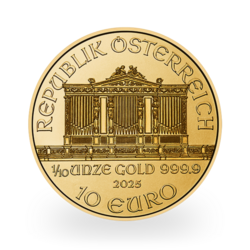"Where could inflation come from?", we asked ourselves in our previous article on rising energy costs. Let's explore another possible cause, reactivated by current events. When we look around us and throughout history, it doesn't seem that monetary sentiment alone is enough to cause prices to go up, it also requires a drop in output. This is the thesis we will develop.
It is forgotten, but the episode of hyperinflation in Germany in 1923 was triggered by the occupation of the Ruhr, the industrial heart of the country, by the French armies from January onwards, with Paris wanting to force Berlin to resume payment of war reparations. The German workers then went on a "patriotic" strike, supported by the government, which took over from the companies to pay their wages, financed by the printing press. Hyperinflation = monetary printing + fall in production. We saw the same phenomenon in Zimbabwe over the period 2000-2009, with the collapse of agricultural production following a confiscatory and arbitrary land reform, or in Venezuela with the fall in production and oil revenues, in both cases with a freewheeling monetary impression. The fall in production makes goods scarce, while the abundance of money makes prices unstable, and the phenomenon gets carried away and becomes self-sustaining.
Conversely, the Japanese banknote issue, which is fuelling a public debt equivalent to 250% of GDP-the record for OECD countries- does not translate into inflation, which remains zero. But it must be said that the archipelago's industry remains very solid: when you buy a car, a camera, electronic equipment, you get the best technology, reliability, all for a competitive price. The same is true in the United States, a leader in many fields, and whose economic health is growing stronger with the lowering of taxes and the reduction of bureaucratic and ecological standards led by Trump. This is also the case in Europe, albeit to a lesser degree.
Competitive and innovative industry and technologies spread their benefits to the whole economy, one could say, and monetary printing leads to bubbles (real estate, stocks), to financial crashes (2008), certainly dangerous, but which do not succeed (for the moment) in destroying the heart of the economy.
And that's why we now need to look at the coronavirus and China, because since the beginning of the epidemic and the quarantine of entire regions, we have been witnessing a sharp drop in industrial production and, at the same time, a runaway banknote issue (150 billion euros injected by the central bank on February 2, and this is certainly only the beginning). The conditions for an inflationary slide are therefore, in our opinion, in place, even if everything will depend on the scale and duration of this epidemic, which it is too early to estimate. Given China's weight in the world economy, this inflationary wave would have international repercussions.
In any case, here is the scenario (in our opinion) to keep in mind, that of a drop in production due to an epidemic, a disruption in oil supplies (war in the Middle East), strikes and unrest, a bank crash that would ruin savers and businesses, or other black swans; and on the other hand, a central bank that would abuse its printing press in the belief that it was doing damage control. A configuration that is not at all unlikely.
Reproduction, in whole or in part, is authorized as long as it includes all the text hyperlinks and a link back to the original source.
The information contained in this article is for information purposes only and does not constitute investment advice or a recommendation to buy or sell.

















